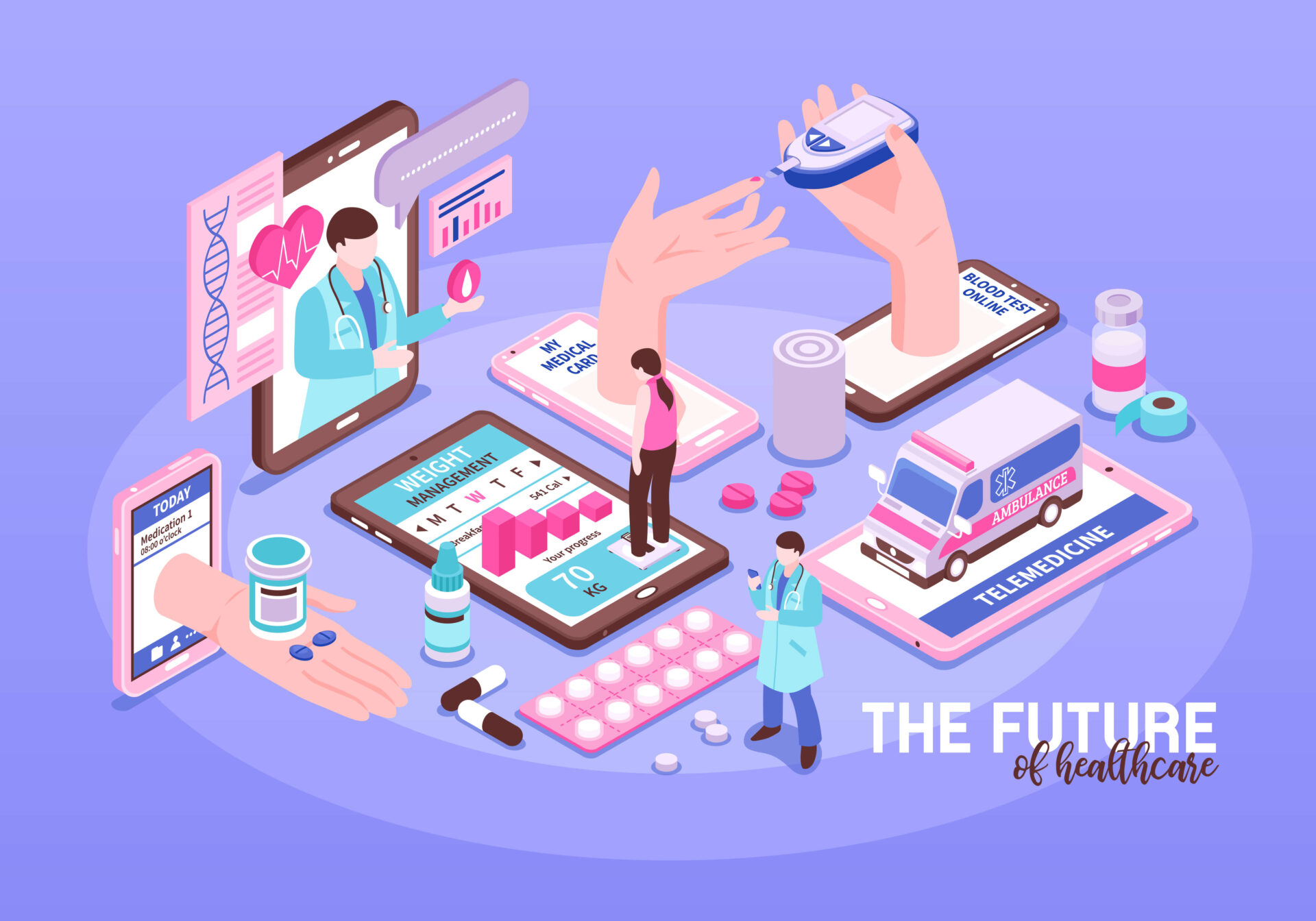In the post-pandemic landscape, the development of healthcare applications has emerged as a crucial lifesaving tool, playing a pivotal role in addressing the evolving needs and challenges of the healthcare sector. The global health crisis has led to a complete overhaul of existing processes, resulting in a shift in healthcare priorities and patient needs, necessitating a reevaluation of how healthcare services are delivered. The advent of healthcare application development practices has empowered patients to seek remote consultations, while providing healthcare professionals with tools aimed at streamlining data management for enhanced efficiency. This digital transformation presents both opportunities and challenges.
For successful outcomes, a healthcare app development company must possess a nuanced understanding of the healthcare sector. The significance of healthcare application development is emphasized by the demand for innovative solutions that align with evolving standards and comply with stringent regulations.
Research data from Gartner Digital Markets underscores these aspects of healthcare mobile app development in the post-pandemic era. The healthcare market is expected to invest in different sections of technical advancement for 2024. In these priority software investments for 2024, the category of IT security holds 28% priority needs, similarly, Medical practice software development holds 27 % priority criteria, medical procedure scheduling with 22%, and marketing with 21% priority criteria. This research data shows a step-by-step guide can be an essential compass for healthcare app developers. That provides a clear roadmap to navigate the complexities and ensure the developed apps meet the unique demands.
This article explores the importance of healthcare apps, delving into the changing dynamics and challenges within the healthcare sector. By highlighting the importance of a methodical approach, our goal is to provide healthcare app developers with essential insights. These insights are crucial for making meaningful contributions to the future of health technology, ultimately fostering a healthcare ecosystem that is more resilient and responsive.
Recommendations for Crafting a Healthcare App in the Post-Pandemic Era
The pandemic era caused many issues in common people’s health on a worldwide scale. The concept of mobile application development made and consistently making the healthcare industry heal from such issues. In this, the further section highlights proper guidelines for healthcare app development.
- Defining Objects and Conceptualization
In the evolving landscape of post-pandemic healthcare, the development of a healthcare app demands a meticulous approach. The initial phase involves defining clear objectives and conceptualizing the app’s purpose. Identifying specific needs, creating detailed user personas, and prioritizing compliance with healthcare regulations lay the foundation. Security measures must be robust to safeguard sensitive patient data throughout the development process.
- Effective Consideration of Design and User Experience
Effective consideration of design and user experience is paramount in ensuring the app’s success. An intuitive user interface, accessibility features, and responsive design are key components. The app must cater to the diverse needs of both healthcare professionals and patients. This phase requires a careful blend of creativity and functionality to create a seamless and user-friendly experience.
- Development and Coding Stages
Moving into the development and coding stages, adopting an agile methodology ensures flexibility and responsiveness to changing requirements. Scalability and interoperability are crucial considerations to accommodate potential growth and facilitate seamless data exchange with other healthcare systems and devices.
- Testing and Quality Assurance
Testing and quality assurance form the third pillar of development. Rigorous testing across different scenarios, integration of user feedback, and continuous improvement are vital aspects. The aim is to create an app that not only meets regulatory standards but also exceeds user expectations in terms of usability, security, and performance.
- Deploying the Software
Deployment of the software should be a gradual process, minimizing disruptions and ensuring a smooth transition for users. Comprehensive training programs for healthcare professionals and end-users are essential to maximize utilization and adoption. Gradual deployment allows for real-time adjustments based on user feedback, ensuring the app meets the practical needs of its users.
- Optimizing and Managing the Developed Software
optimizing and managing the developed software is an ongoing process. Continuous improvement through user feedback, regular updates to address security vulnerabilities and improve functionality, and leveraging data analytics for informed decision-making contribute to the app’s long-term success. Adherence to these six guidelines ensures the development of a robust, user-friendly healthcare app that addresses the unique challenges of the post-pandemic healthcare landscape.
Read more: Top 10 Compelling Reasons to Opt for Swift in iOS Development
Conclusion
The seamless integration of compliance, security, and scalability ensures the app’s effectiveness in meeting the dynamic needs of healthcare professionals and patients alike. Continuous improvement through user feedback, regular updates, and data-driven decision-making solidify the app’s relevance in the evolving healthcare landscape. This step-by-step guide serves as a roadmap, guiding healthcare app developers toward the creation of a robust, user-friendly healthcare app poised for success in the post-pandemic era.


